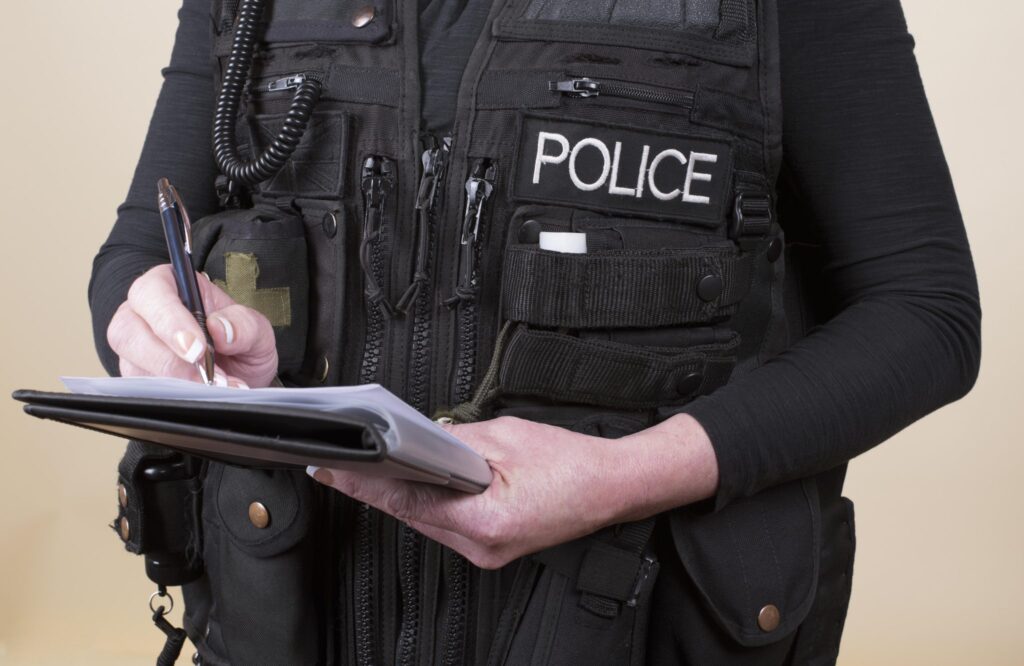
In many cases, proving fault is key to collecting compensation after an accident in Colorado. Your ability to recover damages from the other driver’s insurance company will likely depend on who was at fault in your car accident. Sometimes fault is obvious, while other times, it’s questionable. There can be confusion around who actually caused the accident and who is legally at fault. What do you do when you aren’t sure who is at fault for your car accident? What happens if you are at fault in a car accident?
Colorado is an “at-fault” state
In 2003, Colorado changed from a “no fault” car insurance state to a tort system or “at fault” state. Under the original no fault rule, drivers turned to their own insurance policies to collect compensation after a car accident, regardless who was to blame for the accident. Only once your injuries reached a certain threshold could you make a claim against the at-fault driver. Now, under the at-fault rule, drivers are allowed to file claims against the responsible parties without waiting to reach a threshold.
Accident victims in Colorado are allowed to seek compensation in one of three ways after an accident:
- By filing a claim with their own insurance company if the at-fault driver is uninsured or underinsured
- By filing a claim against the at-fault driver’s insurance carrier
- By filing a personal injury lawsuit against the responsible driver
Colorado follows the modified comparative negligence legal theory. This means that if you are less than 50% responsible for the accident, you are allowed to seek compensation for your injuries. However, the amount of the damages you are eligible to receive will be reduced by the percentage of your own responsibility for the accident. If you are determined to be at least 50% responsible for the accident, however, then you are not allowed to receive compensation.
For instance, if a jury finds that an injured party was speeding prior to being hit by a drunk driver, they may determine that the injured party was 10% responsible for the accident and their own injuries. If the jury determines that the injured party suffered $100,000 worth of damages, the net verdict would only award the injured party $90,000, which is 10% less than the amount of damages suffered.
Determining negligence in a Car Accident
Insurance companies account for the state’s definition of negligence when determining who is at fault in a car accident. Depending on the state in which the accident occurred, a few types of negligence may be considered.
- Contributory negligence– this is an all-or-nothing way of determining fault. If you at all responsible, even 10 percent, for the accident, youwould notbe compensated for repairs or injuries. You would have to be completely blameless to receive compensation – for example, if your car was parked and struck by another vehicle.
- Comparative negligence– after the percentages of fault are defined between the parties involved, you can collect compensation in proportion to your degree of responsibility. So, if you were 10 percent responsible for the crash, you could collect up to 90 percent of damages from the other driver’s insurance.
- Modified comparative negligence– you can seek damages from the other party’s insurance company based on your percentage of fault, but only within the state’s limits. In some states, like Colorado, as long as you are found to be less than 50 percent “at fault” for the auto accident, you might be able to recover a portion of your damages.
When law enforcement responds to a car crash, officers typically investigate and interview everyone involved along with any bystanders who witnessed the crash. Based on their investigation, officers assign a percentage of fault to each party. This percentage, depending on what state the accident occurs in, can determine your ability to recover damages. You may be thinking, how can they tell who is responsible in a car accident? How can you tell who hit who in a car accident? Each party plays a big role in determining liability in a car accident.
How to Determine Fault in a Car Accident
After an accident, it’s important to clearly establish fault. This is often done in a variety of ways, including:
- Police report– You must file a police report in Colorado after an accident, according to Colorado law. This can be done by calling 911 and waiting for the responding officer to arrive. You can also file a report online after the accident. The police report will play an important role in establishing fault after an accident because the police’s official version will be considered more seriously than the verbal testimony of those involved in the accident.
- Pictures taken– Pictures that are taken at the accident scene can also shed light on who is at fault after an auto accident. Pictures of surroundings, the position of the vehicles, and other evidence can be invaluable to your case.
- Eyewitness testimony– People who witnessed the auto accident can also shed light on what occurred in the moments before the crash. This can help your attorney when trying to establish who is to blame for the crash and can be useful when disproving other drivers’ claims.
- Accident Recreation/Reconstruction– Sometimes it is necessary for your attorney to recreate the accident scene to clearly establish liability in a case. To do this, your attorney may hire accident reconstruction experts that will use evidence and science to prove who is at fault for the crash.
You may be wondering how to prove you are not at fault in a car accident. Be clear in your descriptions of what happened, including specific time and location, collect evidence to support your defense regarding fault and write down exactly what happened and any comments from the other drivers. When you are speaking to the officers and other drivers, avoid admitting fault. A simple, “I’m sorry” or “I didn’t see you” can hurt your case. Even if you think that you’re at fault, let the authorities and insurance company reach that conclusion objectively.
What If I Am at Fault for the Car Accident?
If you are found to be at fault for the auto accident, your insurance company will typically pay for the other party’s injuries and damage done to their vehicle. Depending on your insurance policy, your insurance company may also pay to have your vehicle repaired and your medical expenses may be reimbursed. Full-coverage collision insurance is not required by Colorado state law, but can be purchased in addition to the liability insurance that is mandated. If you lease your car or if you are still making payments, then the bank will have likely required you to purchase collision insurance.
After a car accident, make sure to take care of yourself – accidents can be mentally, financially and physically bearing. Research the terms of car accident claims in your state, and understand exactly what you are responsible for regarding the other parties involved in the accident.
A Quick Note About Insurance:
If you are unsure about your insurance coverage, request a copy of your insurance policy and discuss it with your auto accident attorney when you come in for your free consultation. Your attorney will be able to help determine who the responsible parties are and what your insurance policies will or will not cover. If you believe that your insurance company is acting in bad faith and not upholding their end of the agreement, it’s vital that you contact an attorney immediately.
Contact a car accident lawyer

